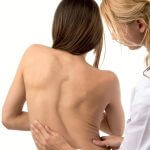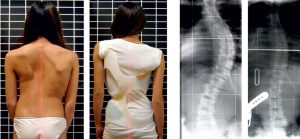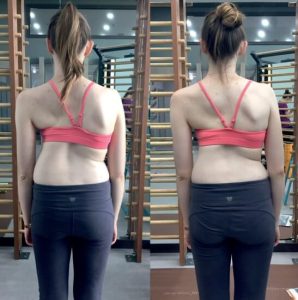
Scoliosis is defined as a condition involving a spine that curves to right or left side at more than 10 degrees. The spine curves to one side while vertebral bones rotate around their own axis. Thus, scoliosis is a three dimensional deformity. It may cause severe body deformities, including thoracic (chest) deformity that may affect the functioning of internal organs. Scoliosis can manifest itself in one or more curves on the spine. It may be congenital, idiopathic (a condition for which the cause is unknown) or it may develop upon any underlying neuromuscular disorder. The most common form is idiopathic scoliosis. The onset of scoliosis may vary from infancy, adolescence and adulthood. It is more common in adolescents. The progression rate of scoliosis depends on the patient’s age, sex, the type and size of the curve. Scoliosis is more common in young girls with a higher severity.
What Are The Symptoms of Scoliosis?
- Asymmetry of the rib cage
- Prominent shoulder blades (this is more evident when the patient leans forward)
- Asymmetry of hips and shoulders
- Leg length discrepancy
Diagnosis and Treatment of Scoliosis
Physical examination and full spine X-ray would provide sufficient data for the diagnosis of scoliosis. The first step is to diagnose the grade of scoliosis. For patients diagnosed pre-adolescence, corrective corset specially designed for the shape of spine is used for treatment. A posture and exercise training accompanies to the corrective corset. In adolescence and post-adolescence period, the only effective treatment is exercise. The purpose of exercise is to stop progression and achieve regression. Advanced cases of scoliosis for which progression cannot be achieved, a surgical treatment is administered.

Schroth Treatment
It is a 3 dimensional exercise program developed by Katherina Schroth. Exercises are carried out by straightening the spine along with special breathing exercises specific to the type of the scoliosis. The patient is trained to achieve correct postural alignment and to implement this in their daily routines. Adapting daily routines, correcting kyphosis and lordosis, mobilization techniques and strengthening exercises compose the primary elements for these techniques. It provides a higher rate of success when compared with conservative scoliosis treatment methods.


